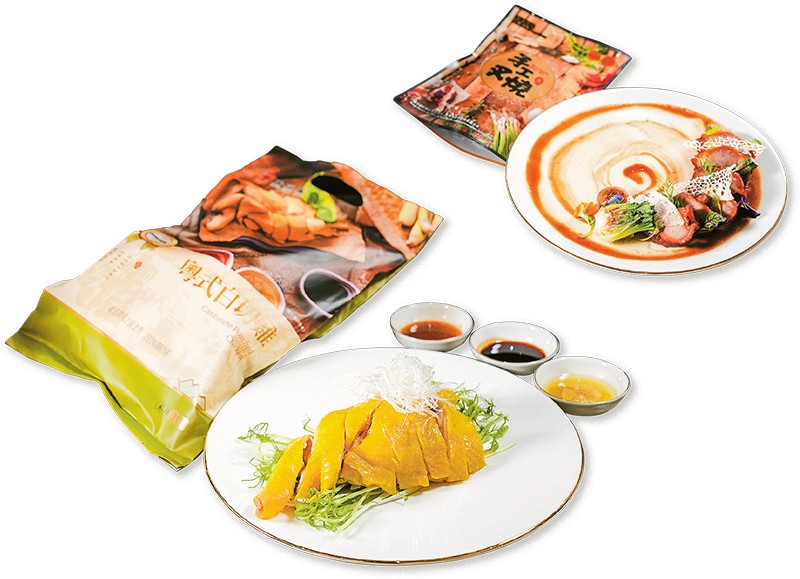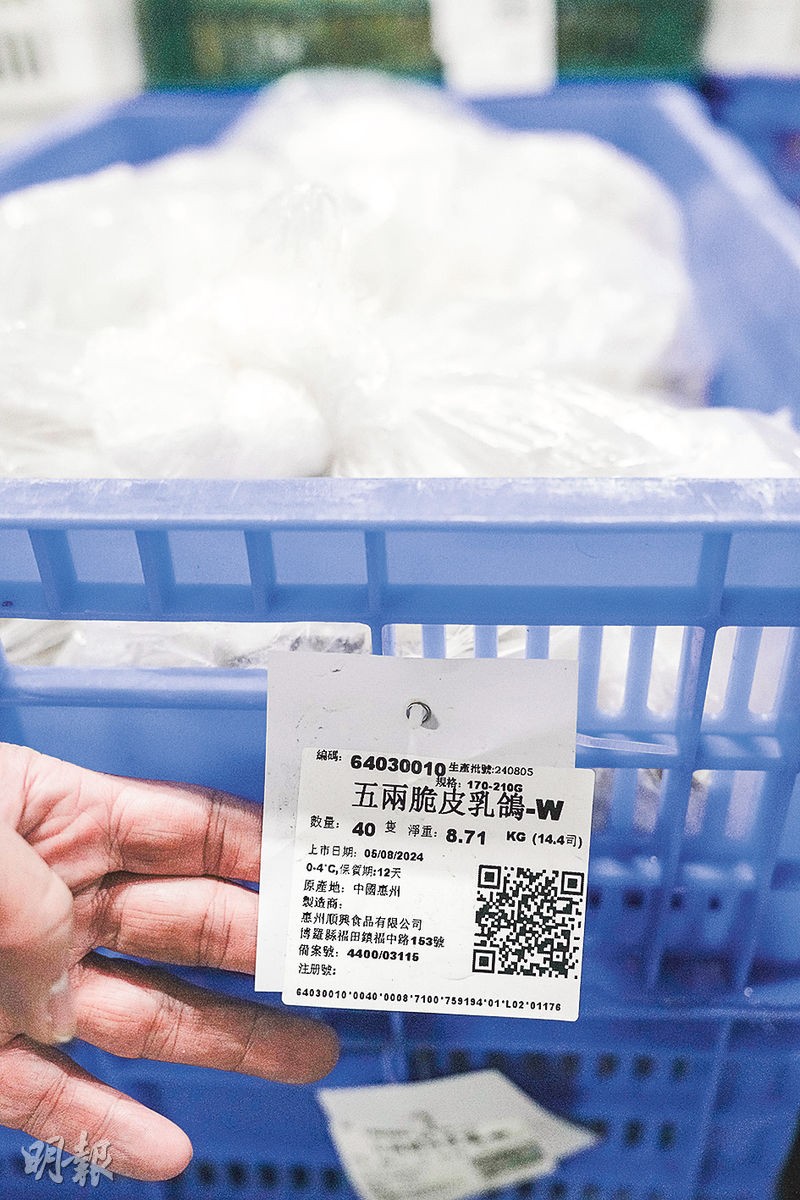2024-08-12
In order to save costs, more restaurants are adopting prefabricated dishes to alleviate labor shortages

If you were told that the restaurants you frequent have started using pre-prepared ingredients that only need reheating, seasoning, and plating before being served, you might feel a bit disappointed if you're someone who enjoys freshly cooked food. However, Pre-cooked Food are not a new concept. Restaurants have always had practices of preparing ingredients in advance. It's just that after the pandemic, with business being tough and skilled chefs hard to find, dishes like Hainanese chicken, roasted meats, pigeons, and Sichuan-style water-cooked fish have become prefabricated, becoming a lifesaver for restaurants. Prefabricated ready-to-eat packs that customers can take home also have the potential to free up household chores; even couples who don't often cook can prepare a feast of local cuisine without too much effort.
Prefabricated Dishes Are Not New
"prefabricated dishes" is a new term in mainland China, but industrialized pre-prepared ingredients can be traced back to the United States in the 20th century and developed further in Japan in the 1980s. The English term "ready meal" refers to food that has been processed and only needs to be heated before consumption. In Japanese, "ryorizumirei" expresses the same idea. In other words, "prefabricated dishes" have existed for some time, although the cost reduction has not been as extreme as it is today in mainland China.
On the Alibaba wholesale website, a Hunanese cuisine supplier of prefabricated dishes has seen good sales. Their "braised pork with preserved vegetable (200g)" sells for 2 RMB, and their "minced meat with pickled vegetables (150g)" goes for only 2.8 RMB. These low prices are due to large-scale automated production. According to the product description, these products solve problems such as the shortage of skilled chefs and rising costs.
According to the definition by the State Administration for Market Regulation, prefabricated dishes are industrially (automatically) processed, ready-to-use pre-packaged dishes that can be consumed after heating or cooking. They cannot contain preservatives and do not include staple foods. A chef with two years of experience, Xiao Ming (a pseudonym), says he hasn’t heard the term much but thinks of fried chicken and French fries when he does – common fast foods that restaurants order daily.
Industrialization and cheapness, when applied to food, seem to carry more negative connotations. Huang Jiahe, president of the Hong Kong Catering Industry Association and a proponent of hand-pulled Hong Kong-style milk tea, says he would feel sorry if restaurants widely used prefabricated milk tea (like powdered tea), "It wouldn’t be as fragrant and smooth! And every cup would be the same." Xiao Ming reminds us that restaurant businesses usually involve some form of preparation beforehand, though not necessarily just reheating. He believes that while there’s no problem with restaurants focusing on prefabricated dishes, the question is whether they are using ingredients that shouldn’t be prefabricated. He asks why few restaurants start from scratch with all their ingredients, "Why don’t they prepare everything themselves? Maybe to save costs, maybe they can’t find chefs, or maybe they want to hire fewer chefs."
A shortage of culinary staff is indeed a significant challenge facing the catering industry. Huang Jiahe estimated a month ago that about 20% of restaurant jobs were unfilled, and prefabricated dishes help fill this labor gap. He believes that Hong Kong residents, who often ordered takeout during the pandemic or ate fresh-frozen and canned foods, have become accustomed to prefabricated meals. Even if restaurants now use more prefabricated dishes, consumers can gradually accept them.

Not All Dishes Are Suitable
Prefabricated dishes are becoming more common, but not all dishes are suitable for prefabrication. Xiao Ming says that braised or stewed dishes taste similar whether prefabricated or freshly cooked. "For example, braised beef shank takes a couple of hours to become tender. Restaurants can’t start from scratch; they must braise it in advance." For ingredients that require frying, such as steak, prefabrication isn’t feasible, "You can’t fry it until it’s medium-rare and then reheat it, as it would become drier and drier." Ingredients that require crispiness, like Chinese broccoli and duck confit, are not suitable for prefabrication. Reheated scrambled eggs with tomatoes become tougher. "If a whole dish is just reheated, that would be silly because it wouldn’t be fragrant enough. I think restaurants that use a lot of prefabricated dishes would still add fresh aromatics, like freshly chopped garlic, and stir-fry the prefabricated dishes in the wok."
Prefabricated dishes from mainland China have a big market in Hong Kong. Huang Jiahe has noticed that many Hong Kong restaurants are already using them, from soups, meats, snacks, to drinks. In mainland China, according to a report by the China Chain Store Association, about 70% of takeout merchants use prefabricated dishes, and their use in chain restaurants is an "open secret." The report states that prefabricated dishes can effectively reduce costs and kitchen space. For example, a serving of braised pork rice that sells for 17.5 RMB yields a net profit of only 0.5 RMB without prefabricated dishes, but that profit rises to 3 RMB with prefabricated dishes.
However, the food safety of prefabricated dishes from mainland China is a concern. For example, CCTV exposed a factory in Anhui province that used "lymphatic meat" to make preserved vegetable pork. Low costs are not always a blessing and may come with food safety concerns. To combat this issue, the central government issued "Document No. 1" last year, proposing regulations for the prefabricated dish industry. The People's Daily subsequently described prefabricated dishes as a new "trillion-yuan industry."

Whole Prefabricated Chicken Can Be Ready in 15 Minutes
There are many articles in mainland China teaching people how to identify prefabricated dishes. A survey by the Jiangsu Consumer Council found that over half of consumers go to restaurants to eat fresh dishes and oppose the use of prefabricated dishes. In Hong Kong, many people’s palates have been won over by the prefabricated meat products of Tong Shun Xing Poultry. The company’s website showcases its clients, including Tai Hing, Cui He, Maxim’s, Café de Coral, and Starlight Seafood Restaurant. This company, founded in the 1990s to supply poultry to Hong Kong, transitioned to prefabricated meat products 15 years ago and now accounts for about one-third of Hong Kong’s imported chicken.
During the interview, a staff member who was previously a Chinese and Western chef brought out a plate of Hainanese chicken, braised pigeon, and honey-glazed barbecued pork. General Manager Tang Zhenfeng explained, "Prefabricated dishes mean standardization and quick meal service. For example, this plate of chicken took my colleague about 15 minutes to prepare. If you used traditional methods, it would take an hour to cook the chicken from raw, and then you’d need to cool it down and blanch it, which takes at least another hour or two, and it’s difficult to preserve. Barbecued pork traditionally takes at least three hours."
Customers can choose to buy whole chickens that have been simply cooked. When serving, they can slice, season, and plate the chicken, then reheat it to restore the ideal flavor of the dish. "Pour over sesame oil and soy sauce, and it becomes sesame oil chicken; pour over ginger and scallion sauce, and it becomes ginger and scallion chicken." Even with prefabricated barbecued pork, restaurants can adjust the degree of charring according to preference, "If you like charred edges, you can grill it longer." If they prefer prefabricated seasoning, which is better and more consistent, Tong Shun Xing can provide fully seasoned prefabricated dishes that only need to be reheated.
"Our products aren’t necessarily cheaper than buying raw ingredients, but they allow restaurants to save on labor and maintain consistency in their offerings." He said that the shortage of chefs in Hong Kong is due to the tough nature of the work, with few people entering the profession. Even if high salaries are offered, it may be difficult to find experienced chefs. "We hope to alleviate the pressure in the kitchen. We have SOPs (standard operating procedures) to teach our customers how to reheat at specific temperatures, and they just need to follow the instructions."
Tang Zhenfeng said that under the central government’s definition, prefabricated dishes are generally a positive term. Some criticize them as "leftover dishes," but he believes that with current processing technology, as long as the ingredients are handled and refrigerated in real-time, the freshness and nutritional content of prefabricated dishes can be ensured. With sterilization and proper logistics and storage arrangements, food safety risks can be controlled.
"Some people will cut corners to reduce costs. I don’t think price wars are meaningful. Of course, reasonable prices are necessary, but creating unique flavors and maintaining quality is what wins the hearts of consumers." When asked if chain restaurant clients would mind disclosing that their meals use prefabricated dishes, Tang Zhenfeng said that most restaurants wouldn’t advertise it, but he hopes that his prefabricated dishes can gain a reputation, much like how restaurants might boast about using instant noodles like Nissin Chukamen for noodle dishes. In the future, there might be restaurants that boast about using "Tong Shun Xing chicken."
Source: Ming Pao

